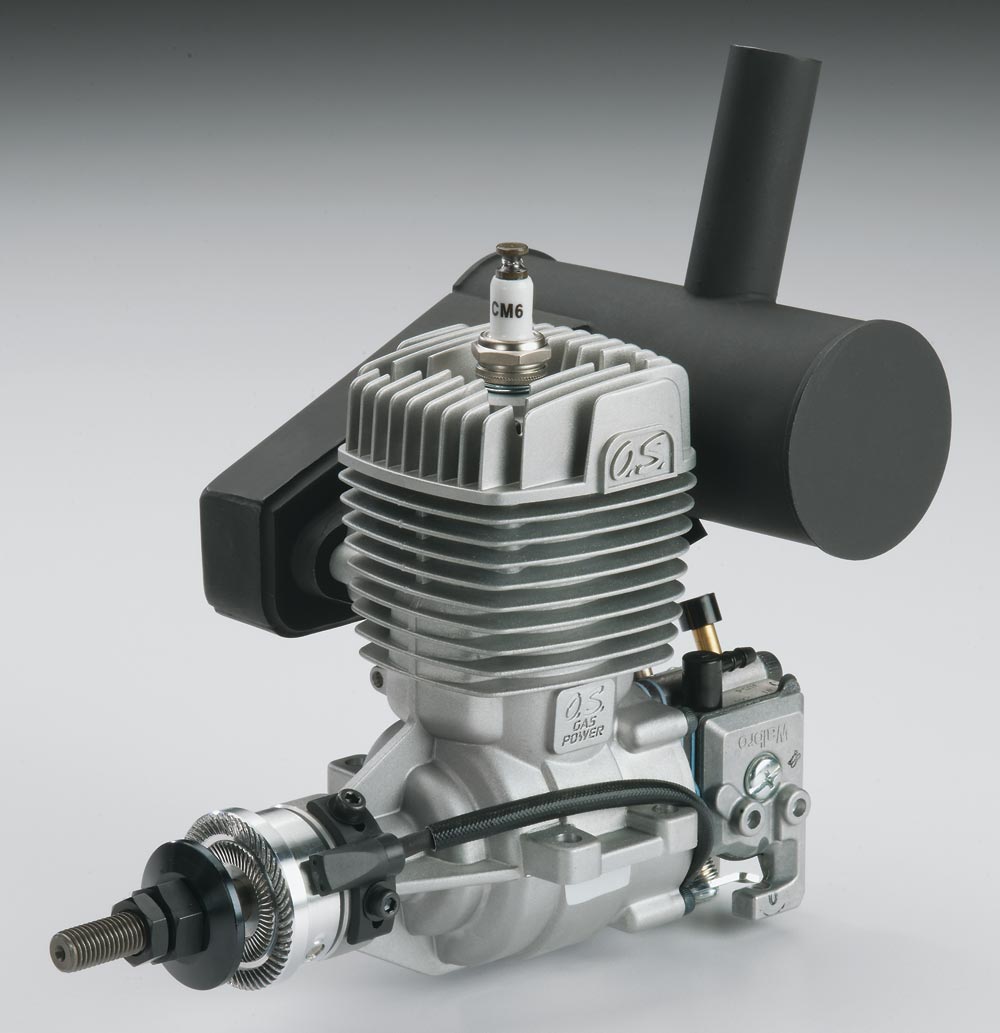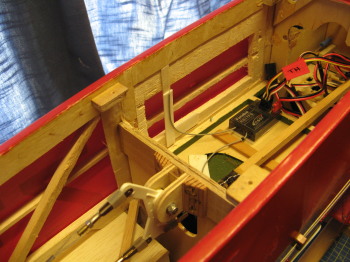Some of the old radio gear
RESTORATION OF FORGOTTEN DH.82a TIGER MOTH
Some years ago my friend and building partner on the SE5A was given, a very nice 72inch (a little over 1/5 size) we believe Practical Scale Tiger Moth, complete with a Laser 150, by an old club colleague who was retiring abroad.
The only condition to the ownership was that the model had to be flown (as yet untried) and a video recording made and sent out to the original owner / builder.
This was dutifully done and a video recording sent.
Although the model flew it crashed just after take off. The reason being, almost no lateral control from the ailerons and very pitchy due to a rearward C of G.
Only slight damage occurred to the cowl and the R/H lower wing however, which was soon repaired.
After rebalancing and adding 2 1/2lb to the nose and adjustment of the control surfaces, she made her first flight, with brick like qualities, but this time returned safely to the ground unscathed. She weighed over 18lb !!
As the model was not a pleasure to fly, she was only ever flown once again at a club scale event and shown at static exhibitions, then relegated to the loft, where she remained for several years.
Then one evening working on our SE5A down the shed, she came up in conversation . Don't ask me why but she did. And a good job she did, as it sparked my partner in crime to dig her out from the loft and have a look at her.
He currently has the fuselage in his shed and has weighed it. It came in at a massive 9 1/2 lb. This weight is without the Laser 150 engine and the 2 1/2 lbs of lead needed to balance it.
On further examination of the fuselage, it became very evident that the model, although very nicely build was somewhat over engineered and the choices of wood used much heavier than that required. On top of this 90% of the servos and other radio gear where located well rearward of the C of G explaining the need of so much lead in the nose to balance her.
Below in the first picture, the over engineered parts that have been removed, bringing the fuselage weight down to a more respectable weight of 6 1/2 lbs a decrease of 3lbs
Picture 2 showing the old radio gear which will be replaced with the now much lighter 2.4 system. note the square black square box to the back of the tub. This is a failsafe system, now not needed with the advances in radio systems on the market today
|
|
Some of the old radio gear |
Picture 1 and 2 below showing the location of the original radio installation. Way to far back from the C of G
|
|
|
The first picture showing an access panel that for some strange reason housed a large metal bolt that seemed to serve no purpose, only adding weight to the tail end of the model
The rest of the pictures show some of the great scale detail that has gone into this model
|
|
|
|
|
|
|
|
|
|
|
So what's next
1.Now the fuselage has been lightened the next
job is to refit new radio gear as far forward as possible to that of the C of G,
which is very achievable and to install a new engine, as the Laser 150 has now
gone to a new owner.
Currently a suitable petrol engine to power the model is being looked into, but
whether or not one can be found, that sits under the cowl without having to cut
the cowl about is debatable, but we will see. If not then a glow will be used as
originally was the case.
2.The wings will be looked at, to see if there
are any ways of reducing their weight.
it is felt though that there isn't much scope to do so, as it would most likely
require the covering to be removed to revel any over engineered modelling
techniques, as seen in the fuselage construction.
Anyways with a reduction of 3lbs in the fuselage weight and the moving of all
the radio gear up to the C of G location within the model, it is hoped that we
should have a completed model with an all up weight of around 11 to 12 lbs which
is more respectable for a model of its size.
After much searching a suitable engine has been found. An OS GT22 Petrol see picture below.
The dimensions of this engine according to the specifications should fit into the cowl without the need to alter or cut it. The only modification will be to the engine bearers that will need opening out to accept the crank case, which will not be a problem as they are more than is really needed for an engine of this size.
 |
|
As a petrol engine is going to be used, the
original tank used in the model has to be removed from its housing to
inspect its condition, which as it happens turned out to be as good as new, only
ever having had a couple of fills with glow fuel.
The tank has now been cleaned thoroughly to remove any residue from the
old glow fuel and the inner clunk tube replaced with neoprene petrol
tube as can be seen in picture one below.
The second picture shows the tank now replaced into its housing with the fuel feed tube and breather tube routed through to their outlets ready for connection where required. Also note in picture two the new elevator servo in its new location now forward of the C of G
.jpg) |
%20(350x263).jpg) |
The next picture below is showing the new rudder servo with its now lighter housing installed again forward of the C of G above the tank.
.jpg) |
Work carried out week commencing 27th January 2013
As the model was still tail heavy after a C of G check was made shortly after the initial removal of the additional wood not required in the plans. The following picture showing the fuselage after further removal of additional 1/16 ply doublers and a rectangular section (also not needed in plans) from the 1/4 balsa sides. A necessity to improve the balance of the model.
Note also the new 2.4Ghz receiver installed well away from the ignition unit.
 |
It’s here at last!! Pic 1 Shows engine box. Pic 2 Shows GT 22.
 |
 |
In the next Picture the throttle servo has
now been relocated and mounted directly behind the firewall so as to have
a short solid link to the carb.
Picture 2 below The ignition unit mounted on
“Hook and Loop” and shoe horned behind the firewall at the top of the cowl.
 |
 |
The next picture below Shows the engine mounted
inverted in the airframe. A small amount was needed to be removed from the
bearers to accommodate
the GT 22.
Picture 2 below Shows the aircraft with the
engine installed, less the exhaust, this going to be a problem, due to the
narrow front end of the cowl.
problem may be resolved by having a custom exhaust made, but we will see if
there's any standard exhaust available that will fit this engine before going
down the custom route..
 |
 |
After considerable searching ”on line” for a suitable custom exhaust (with no luck, due to the narrow front end of the Tiger’s cowl) it was reluctantly decided to cut a small opening in the left hand side of the cowl to accommodate the OS GT22 Silencer.
Time to assemble the model and check the new C of G, and it was still slightly rearwards!!
Ballast was added inside the cowl, making the overall model weight just under 14lb, heavy but still about 4lb lighter than the original weight.
Most of the weight saving was due to modern radio gear and flight packs being lighter, and installing servos etc under the C of G position and in front of it.
After “running in “ the engine on a 25 to 1 petrol/oil mix, and setting the “High end “ and “Idle” settings, it was now time to Range check and test fly the model.
My Friend had to admit, when the time came for that first flight (remembering what a beast she had been in the past) his knees were knocking inside his favourite blue overalls.
But, it was a beautiful summer evening with just a slight southerly breeze, so no excuses.
After a few turns of the prop with the chock pulled out, the OS started easily by hand and he taxied out to the strip, not knowing what to expect.
To his utter surprise the “Tiger” took off and flew like a dream!! The difference in this aircraft’s flight characteristics was unbelievable, He was so delighted that the work that he had carried out had all been worthwhile. The turns were smooth in both directions and she cruised around at 1/3 throttle with ease, just what one would expect from such a beautifully built and detailed model. He was so pleased!!
The first pic below shows the OS GT22 installed and silencer fitted. A slight opening had to be cut in the side of the cowl to allow the front bolt and 6mm of the silencer front to protrude.
|
|
Picture 2 and 3 below shows the “Tiger Moth” in the pits at our flying field, awaiting her turn to fly at our club scale meeting. August 2014 which incidentally came first
|
|
|
Video footage of model in the air to come